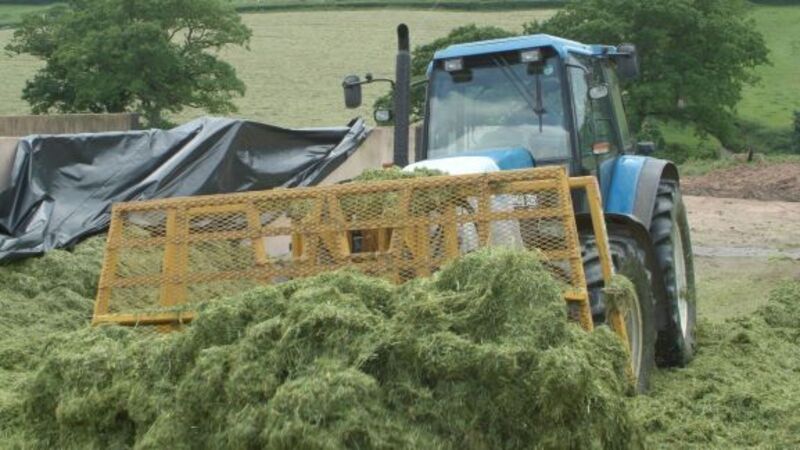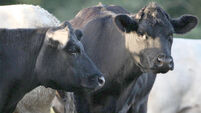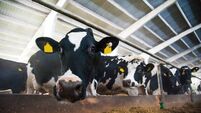Vast majority of the 2015 silage has preserved very well

After such a good grass growing year. there is plenty of silage saved. with pits full to the brim and plenty of bales also made.
Quality varies around the country. but thankfully, unlike last year, the vast majority of 2015 silage has preserved very well.
The feed value of this year’s silage has been significantly influenced by the weather we had in May.
Some were lucky to cut early and have great feed saved, while others got caught by the rains of mid to late May.
In general, DMDs are between 68 and 72 for first cuts, with some early cuts closer to 80.
Nutrition Value of Silage
When you get your silage results back, what figures do you look for?
Most immediately, look for the DMD, but there are more important figures to look for.
The pH of silage is the main indicator of preservation, and should between 3.8 and 4.2 for good preservation.
The dry matter of your silage determines the amount of fresh feed that animals can consume.
The ME or UFL indicate the energy that they will consume per kg of dry matter eaten.
Remember that energy is what creates meat and milk in ruminants.
Protein is essential for healthy, productive animals, and encourages intake.
Many grass silages are low in protein this year, and this should be taken into consideration when balancing diets correctly this winter.
Wet and dry silages
As was the case last year, many silages are either too dry or very wet this year.
Over-wilting continues to be an issue around the country, and this was particularly the case for second cuts taken in July.
Dry silages are very difficult to preserve, and are often a haven for moulds and toxins.
A pH greater than 4.4 is very common in these dry silages.
Excessively dry silages with high pHs require very careful management in the pit, because spoilage once the air hits it will be rapid.
Moulds and toxins, if they enter an animal’s digestive system, will cause poor performance, because they inhibit the population of good bugs in the rumen.
A good, sharp shear grab will be essential, if this type of silage is to be managed well.
Removing this with a loader bucket has the potential to increase losses at feedout and increase production costs.
Silage is expensive to produce without wasting it due to poor pit management.
Wet silages saved between the showers in late May and early June also come with significant challenges.
It is very difficult to get animals to consume sufficient quantities of dry matter from wet silage. Wet silages are generally heavily loaded with acids, and can induce acidosis, as well as depressing appetites.
With both wet and dry silages, it will be best practice to feed it fresh each day, to minimise waste in storage and at the feed trough.
Animals will eat fresh feed better than stale material.
Managing intakes is the best way to manage animal output.
Silage mineral content
Poorly preserved silages, as in 2013 and 2014, have in general turned up with poor mineral content.
This will invariably result in more mineral deficiencies in stock, if deficits are not dealt with correctly.
Excessive levels of antagonists can also be as big a problem as a deficiency in particular elements.
Lead, aluminium and iron are often a major problem if the spring has been particularly wet, and water tables were high.
These antagonists will cause important minerals for animal function to be tied up.
Testing your silage for minerals will help to accurately identify any deficiencies or excess and help you to make more informed mineral decisions.
The right supplement
It is always important to use the correct vitamin and mineral premix for livestock.
Thankfully, years with good silage are much more forgiving in herds, with regard to metabolic disorders caused by minerals.
However, the last thing a beef or dairy farmer wants is a lot of held cleanings, or milk fevers caused by silage when the mineral profile is poor.
It is best to avoid this eventuality by matching your silage with an appropriate mineral for each class of stock on your farm.
Many farmers over the last few years have begun using a mineral bolus as part of their supplementation programme.
They work really well where deficiencies are identified on farm, and the bolus includes the mineral in low supply.
Most boluses contain copper, selenium, iodine and cobalt as their main elements.
Quite a few suckler farmers that I speak to find calving goes much better when cows get a dry cow bolus.
However, a bolus should be used in conjunction with a complete mineral pack for stock, and not as the sole mineral supplement.










